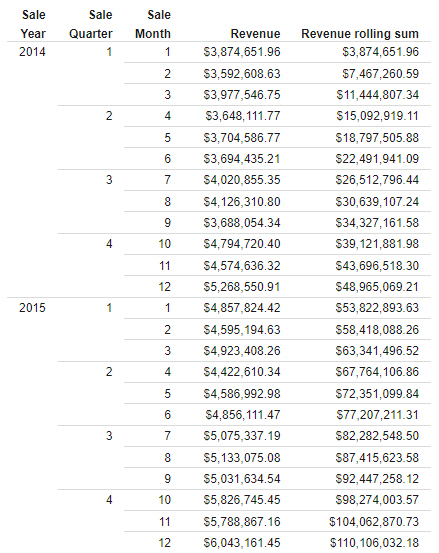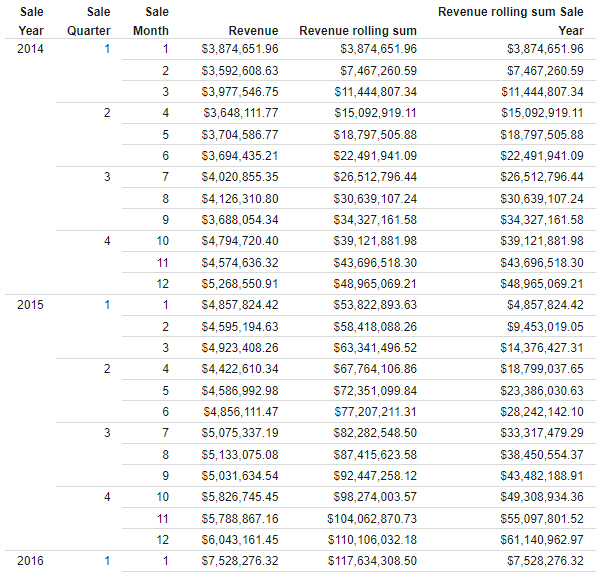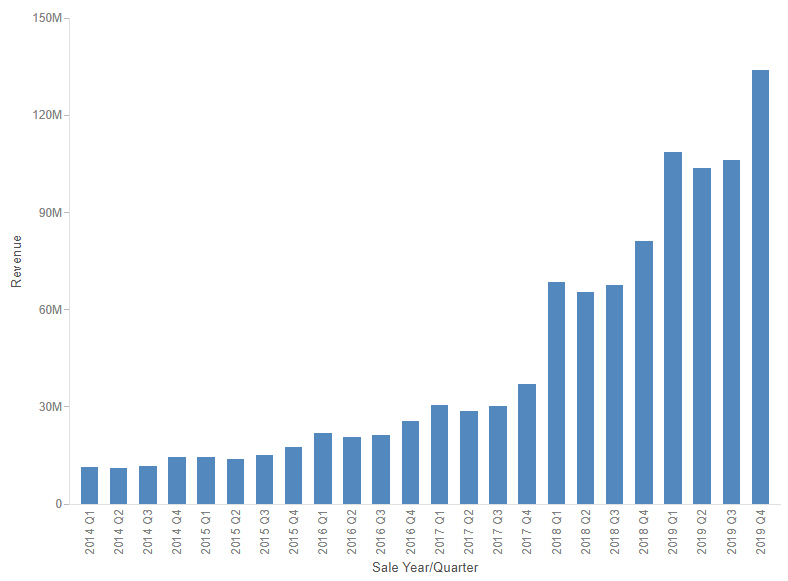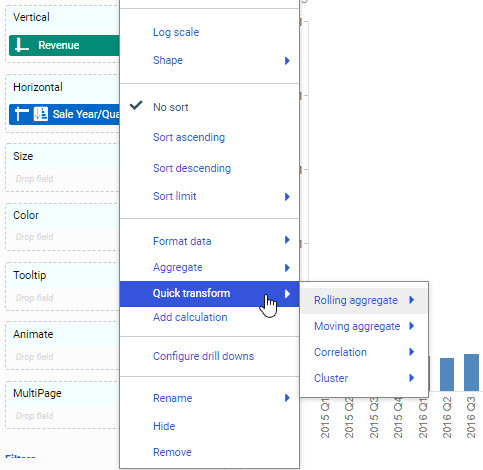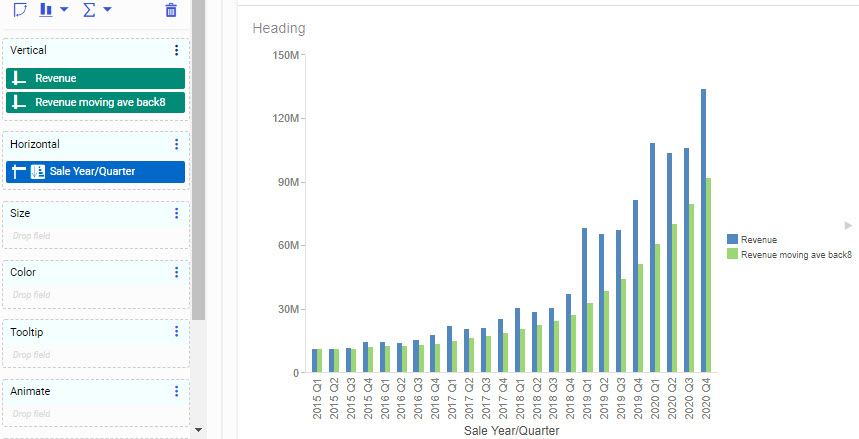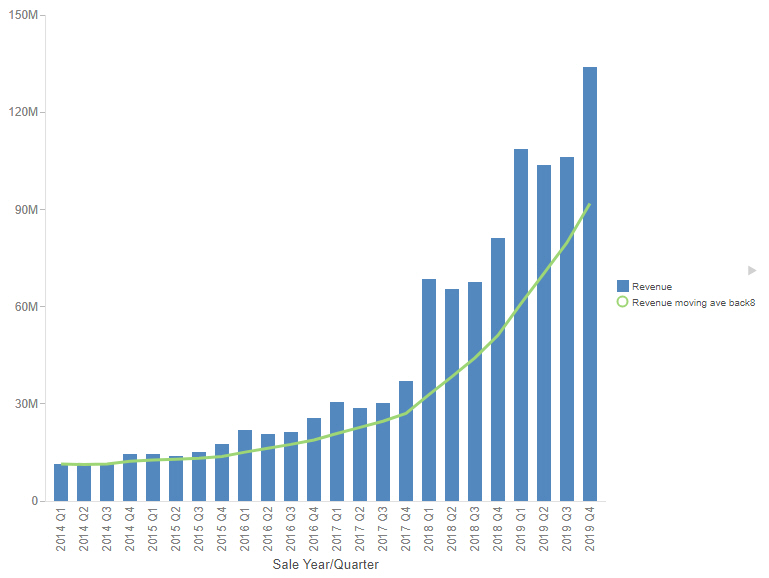|
How to: |
With quick transforms, you can easily apply the most commonly used analytical functions to measure fields in your content. This allows you to quickly apply a function to a field as you create content, expanding your options for incorporating aggregated data.
Quick transforms are robust and support a variety of functions. For example, you can perform a rolling or moving aggregation or correlation (both COMPUTEs) on a measure field. This makes it easy to perform the calculations you need to understand the distribution and patterns in your data with just a few clicks. To access these options, right-click a measure field in your chart or report, point to Quick transform, and then point to one of the quick transform options. Each quick transform allows you to configure how the calculation is performed. The following options are available:
- Rolling aggregate. Reaggregates the total values in the request at each sort value.
- Moving aggregate. Reaggregates subtotal values in the request, for a fixed number of previous sort values, at each sort value.
- Correlation. Calculates the correlation coefficient between two numeric fields.
- Cluster. Partitions values into a specified number of clusters, based on the nearest mean value.
You can do this from the shortcut menu for a measure field added to a non-sorting bucket in a chart or report, such as the Vertical bucket in a bar chart. Placing a measure in the Horizontal bucket, which is used to sort a bar chart, creates entries for each underlying value. In this case, you do not have access to the Quick transform option.
Other examples include the use of the correlation function, which calculates the correlation between two numeric fields. This is often used to display how strongly two variables are related to each other. In addition, the cluster (KMEANS) function partitions observations into a specified number of clusters based on the nearest mean value. The goal of cluster analysis is to group, or cluster, observations into subsets based on their similarity of responses on multiple variables.
Quick transforms create post-aggregation (COMPUTE) virtual fields. A calculated value (COMPUTE) is evaluated after all of the data that meets the selection criteria is retrieved, sorted, and summed. This means that the quick transform calculation is performed using the aggregated values of the fields.
Performing a basic aggregation with a quick transform allows you to convert a field value from its raw state into a calculated field. With the Discount field, you can create a rolling sum that shows the cumulative sum of the field as it changes for each value in the chart. The Quick transform options are shown in the following image.
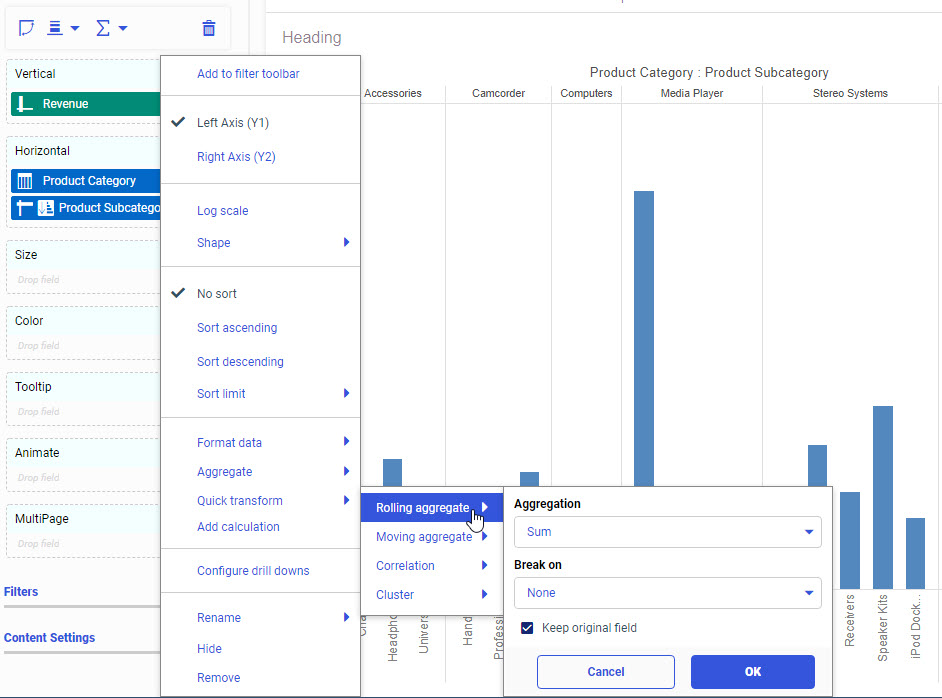
Note: You can perform multiple quick transforms using the same originating field.
Here, you can specify the type of aggregation (for example, Sum, Average, Count, and others) and indicate whether you want to keep the original field. The Keep original field option is selected, by default, if the bucket supports multiple measure fields, and serves the purpose of preserving the original field for other use in your chart. You can also choose to replace the field in favor of the transformed field, by deselecting this check box.
When you perform a quick transform on a field, a new, unique field is created and placed in the same bucket as the originating field, as shown in the following image.

The transformed field is now a COMPUTE, which is a post-aggregation calculated field. It is a separate field, labeled with the transformation that was applied. You can move the transformed field into a different measure bucket to make it easier to analyze your data. For example, the following image shows a scatter chart with Model values plotted based on Quantity Sold and MSRP values. The Cluster quick transform was performed on the MSRP field using the Average aggregation, creating four groups of models with similar average MSRP values. The cluster field has been moved into the Color bucket, making it easy to identify which cluster each model falls into.

